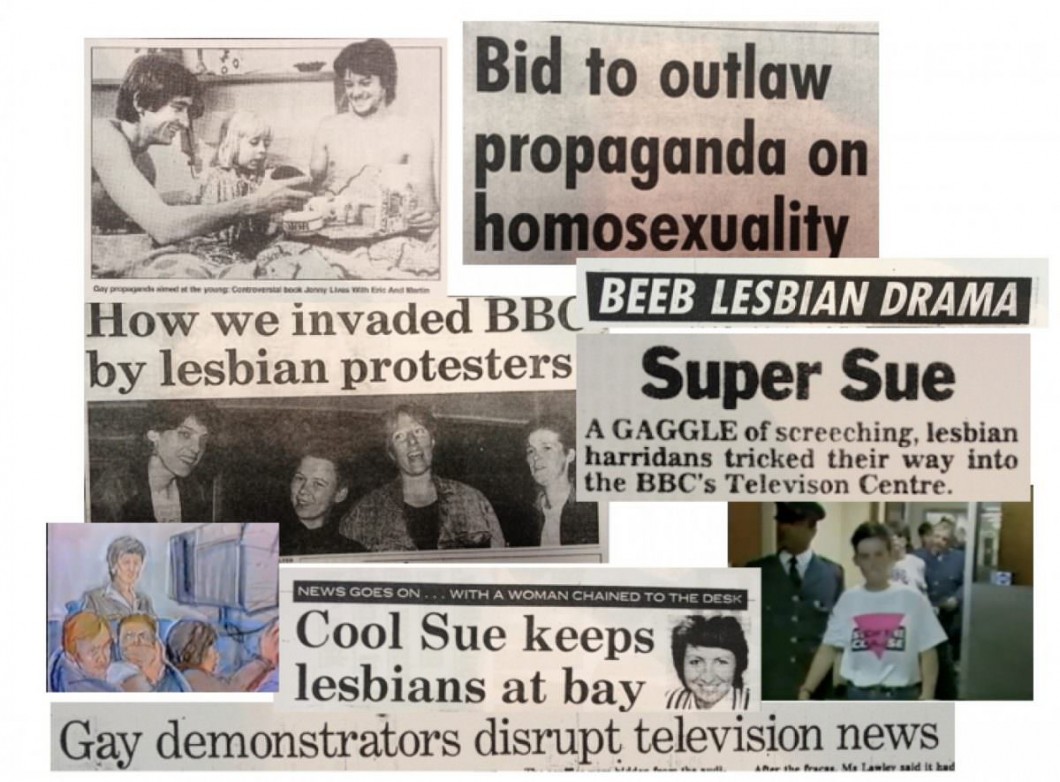British Art Studies invites proposals for a special issue of the journal that explores the 1980s as a crucial conjuncture for queer art in Britain, and which considers how the after-effects of this period influence a queer present. From this present, in which queer art and artists have achieved some institutional access, we ask:
What does refocusing attention on the 1980s offer to artists, historians and curators of queer art in Britain today?
and
How might a return to the 1980s help us attend to the shifting practices, meanings and possibilities associated with queer art in Britain over the last forty years?
During the 1980s, a diverse body of artwork and theory emerged across the UK in response to Thatcherite ideology, the conservatism of the mainstream media, the onset of the AIDS epidemic and homophobic legislation such as Section 28. This was a period Stuart Hall described as a “conjuncture”, a “problem space”, which posed a set of distinctive political, social and cultural questions that together formed an “horizon of possible futures”, to which artistic practices constituted a reply. (Stuart Hall, “Black Diaspora Artists in Britain: Three ‘Moments’ in Post-war History”, History Workshop Journal 61 (Spring 2006): 3–4.)
In recent years, landmark exhibitions such as Queer British Art 1861–1967 (Tate Britain, 2017) have marked a new period of visibility for queer artistic production in the UK, even as artists and scholars have critiqued the imperative to be visible, and advocated for practices and histories that resist “queer” as an institutional category. As the moment when “queer” was first reclaimed as a radical term, the 1980s offers particularly rich historical resources for such work, as witnessed in the recent groundswell of conferences and research projects on the period and its afterlives, through which this editorial team has come together. With this special issue we look to index and interrogate the growing interest in queer art and activism in Britain during the 1980s, and to explore legacies of the long 1980s in work by contemporary artists, scholars, critics and curators.
Queer Art in Britain Since the 1980s seeks contributions that return to this period and consider its wake, exploring the intersections of gay and lesbian, feminist, Black, anti-racist and anti-imperialist, aesthetic, conceptual and political concerns that have underpinned recent queer art in Britain. Much of the art and theory that emerged in the 1980s oriented itself to the future, as much as to the challenges of its present. Acknowledging the non-linear temporalities and overlapping struggles that “queer” signifies, we are also interested in contributions which interrogate how these practices continue to resonate with current and ongoing political struggles and with the recent institutionalisation and historicisation of queer art in Britain.
We are interested in contributions that address, but are not limited to, the following themes:
- Queer art practices in the 1980s, in any medium.
- Practices from the 1990s to the present influenced by queer art, theory and politicised practices in the 1980s.
- Queer art produced and/or shown outside London.
- How the term “queer” was reclaimed and given new meaning, through art and theory.
- The specificities of queer practice and politics in the British context.
- Queer art and its intersections with anti-imperialism and anti-racism in the 1980s and after.
- Exhibitions of queer art and artists from the 1980s to the present.
- The impact of HIV/AIDS and/or Section 28 on art in Britain.
Contributors to the special issue will be invited to attend a study day at a prominent archive of queer art and culture, to consider the archival formations and precarity of art and activism since the 1980s and methodologies for working with queer archives in the present.
The special issue is guest-edited by Fiona Anderson (Senior Lecturer, Newcastle University), Flora Dunster (Lecturer, Central Saint Martins), Theo Gordon (Leverhulme Early Career Fellow, University of York), and Laura Guy (Lecturer, Glasgow School of Art).
Submission Details
Please submit abstracts of 200 words or less to the editors at journal@paul-mellon-centre.ac.uk by 11:59 pm BST on Sunday, 7 May 2023. We will notify the authors of accepted papers by Monday, 29 May 2023. The standard length for scholarly articles ranges between 6,000 and 9,000 words, and other formats are considered when appropriate to the nature of the content. Stills, moving images, 3D models and audio tracks can all be included as illustrations, and proposals that engage with the digital possibilities of the journal platform are encouraged. Feature formats are outlined in the submissions guidelines.
Further details
British Art Studies is an open-access and peer-reviewed journal co-published by the Paul Mellon Centre for Studies in British Art, London and the Yale Center for British Art, New Haven. Since it was established in 2015, it has published scholarship on all aspects of British art, architecture and visual culture, from the medieval period to the present day.
